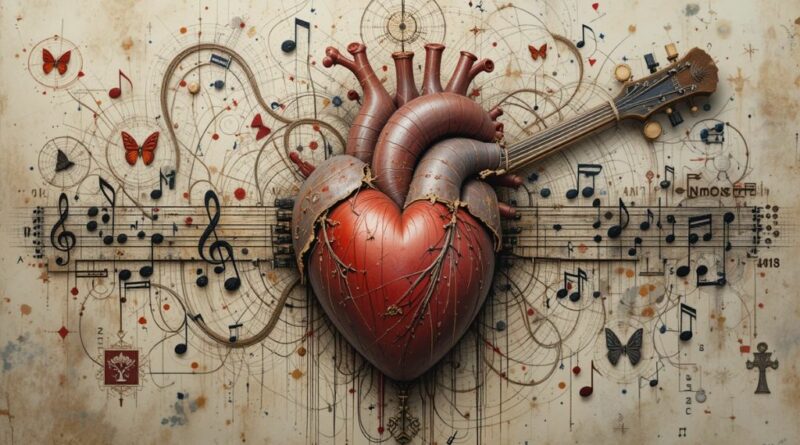The Heart Reimagined: Beyond the Mechanical Pump
Revolutionary Science Reveals Our Most Vital Organ as Nature’s Spiralling Masterpiece
For centuries, we’ve imagined the heart as a simple mechanical pump—a utilitarian muscle that pushes blood through our bodies like an industrial machine. This reductionist view, born from our mechanised understanding of the world, has dominated medical thinking since the dawn of modern cardiology. Yet cutting-edge research is revealing a far more extraordinary truth: the heart is not merely a pump, but a sophisticated, spiralling organ of perception that orchestrates the very dance of life itself.
The Mathematical Impossibility of the Pump Theory
The traditional pump model faces a fundamental mathematical challenge that has long puzzled scientists. Despite the heart’s impressive capability—the most powerful ventricle can shoot water six feet into the air—simple calculations reveal a startling inadequacy. The pressure required to force blood through the entire network of our body’s vessels would need to be sufficient to lift a hundred-pound weight one mile high. This astronomical pressure requirement exposes the limitations of viewing the heart as a mere mechanical pump.
The question then becomes: if the heart isn’t pumping blood through sheer force, how does blood navigate the labyrinthine network of vessels throughout our bodies? The answer lies in one of nature’s most elegant phenomena—the spiral vortex.
The Tornado Within: Blood’s Spiralling Journey
Modern cardiovascular research has unveiled a remarkable truth about blood flow that challenges everything we thought we knew. Rather than flowing as a simple stream, blood moves through our vessels in a complex, spiralling pattern—two streams dancing around each other in a helical formation reminiscent of the DNA double helix. At the centre of this spiral dance lies a vacuum, creating what researchers describe as a tornado-like vortex system.
In nature, fluid motion often chooses to spiral rather than stream linearly, and the cardiovascular system exemplifies this principle beautifully. This vortical flow isn’t merely an interesting anomaly—it’s a fundamental mechanism that healthy hearts demonstrate through strong coupling between vortex and cardiac volumes, with research showing this optimised phenotype is lost in heart failure.
The implications are profound. Blood doesn’t require enormous pressure to reach every cell in our body because it moves through these naturally occurring vortices, which create their own momentum and energy. This spiral motion is so efficient that it helps explain how blood can travel through tens of thousands of miles of vessels with relatively modest pressure from the heart.
The Cellular Symphony: Spinning Within Spinning
The spiral phenomenon extends beyond the vessels themselves to the microscopic level. Individual blood cells spin on their own axes of rotation, creating a mesmerising hierarchy of movement—smaller spinning cells within larger spinning vortices. This discovery reveals the cardiovascular system as a nested series of spirals, each level of organisation contributing to the overall flow dynamics.
This multi-layered vortical system represents one of nature’s most sophisticated fluid dynamics solutions. Each red blood cell, as it spins through the spiralling bloodstream, contributes to maintaining the vacuum at the centre of the vortex, which in turn sustains the flow. It’s a self-perpetuating system of remarkable elegance and efficiency.
The Heart’s Hidden Architecture
Perhaps the most stunning revelation concerns the heart’s physical structure itself. Recent anatomical research has revealed that the heart is not simply a mass of muscle tissue, but rather what scientists term a ‘helicoidal myocardial band’—a spiralling ribbon of muscle that has wound itself into the familiar heart shape we know.
This spiralling architecture isn’t coincidental; it’s fundamental to the heart’s function. The heart is, in many ways, modelled after the swirling, pulsing, dynamically changing flow of the blood. The organ’s twisted, helical structure creates the perfect geometry for generating the vortical flow patterns that drive circulation throughout the body.
This discovery transforms our understanding of cardiac anatomy from a simple four-chambered pump to a sophisticated spiral generator, precisely designed to create and maintain the vortical flow patterns essential for healthy circulation.
The Heart as Endocrine Powerhouse
Moving beyond its mechanical functions, the heart reveals itself as a remarkably sophisticated biochemical factory. The heart is itself an endocrine gland that manufactures and secretes multiple hormones and neurotransmitters. This hormonal activity positions the heart not merely as a circulation organ, but as a central player in the body’s complex communication networks.
The heart produces and releases substances that influence mood, stress response, and overall physiological balance. This endocrine function helps explain the deep connection many cultures have intuited between the heart and emotional states—it’s not merely poetic metaphor, but biological reality.
The Electromagnetic Heart: Broadcasting Beyond the Body
One of the most fascinating aspects of modern cardiac research involves the heart’s electromagnetic properties. The heart generates an electromagnetic field that extends far beyond the physical boundaries of the body—in fact, this field is significantly more powerful than the electromagnetic field produced by the brain.
The quality of the signals the heart sends to the brain profoundly affects our perceptions, brain function, and emotional experience. This electromagnetic broadcasting system suggests the heart functions as a sophisticated communication device, potentially influencing not only our internal physiological processes but also our interactions with the electromagnetic environment around us.
Research into biofield science is revealing how this cardiac electromagnetic field may play crucial roles in everything from cellular communication to interpersonal connections, opening new frontiers in our understanding of human consciousness and connectivity.
The Neurological Heart: A Mind of Its Own
Adding another layer to the heart’s complexity, scientists have discovered that this remarkable organ possesses its own intrinsic nervous system. The heart literally has its own ‘brain’—a network of neurons that can function independently of the central nervous system. This cardiac nervous system produces its own neurotransmitters, making decisions and processing information autonomously.
This neurological independence helps explain phenomena that have long puzzled medical professionals, such as the heart’s ability to continue beating even when disconnected from the brain, and the complex emotional and cognitive changes some patients experience following heart transplantation.
Implications for Health and Healing
Understanding the heart as a spiralling organ of perception rather than a mechanical pump has profound implications for cardiovascular health and treatment approaches. Research shows that restoration of normal vortex ring dynamics may represent a new consideration for individualised heart failure treatment.
This paradigm shift suggests that supporting the heart’s natural vortical flow patterns, electromagnetic field generation, and neurochemical functions may be as important as addressing traditional mechanical parameters. Therapeutic approaches might focus on enhancing the heart’s spiral dynamics rather than simply augmenting its pumping power.
The Poetic Heart: Where Science Meets Wonder
As our understanding of the heart evolves from mechanical pump to spiralling organ of perception, we find ourselves returning to ancient wisdom traditions that always recognised the heart as the seat of consciousness, emotion, and spiritual connection. Modern science is providing the empirical foundation for what poets, mystics, and traditional healers have long understood—the heart is far more than a muscle.
The heart emerges from contemporary research as a spiralling generator of vortical flow, an endocrine gland secreting hormones and neurotransmitters, a powerful electromagnetic broadcaster, and an autonomous nervous system processor. It is simultaneously a fluid dynamics masterpiece, a biochemical factory, an electromagnetic transmitter, and a neurological computing centre.
Towards a New Cardiac Paradigm
This expanding understanding of cardiac complexity invites us to reconsider not only how we approach heart disease and cardiovascular health, but how we understand the very nature of life itself. The heart’s vortical dynamics connect it to universal patterns found throughout nature—from the spiral arms of galaxies to the helical structure of DNA, from the vortices in flowing water to the spin of subatomic particles.
Perhaps the heart’s true genius lies not in its ability to pump, but in its capacity to create and maintain the spiralling patterns that connect us to the fundamental rhythms of existence. In embracing this more complex, more beautiful understanding of our most vital organ, we move from seeing ourselves as biological machines to recognising ourselves as participants in nature’s endless dance of spirals, vortices, and interconnected energy fields.
The heart, it turns out, is not a pump at all—it is a portal into the deeper mysteries of life itself, a spiralling organ of perception that connects us to the very patterns that govern the cosmos. In discovering this truth, we don’t just learn about cardiovascular physiology; we glimpse the profound interconnectedness that lies at the heart of existence.
We’d love your questions or comments on today’s topic!
For more articles like this one, click here.
Thought for the day:
“A word of truth can mobilise two peoples looking for the road to reconciliation.” Donald Tusk



